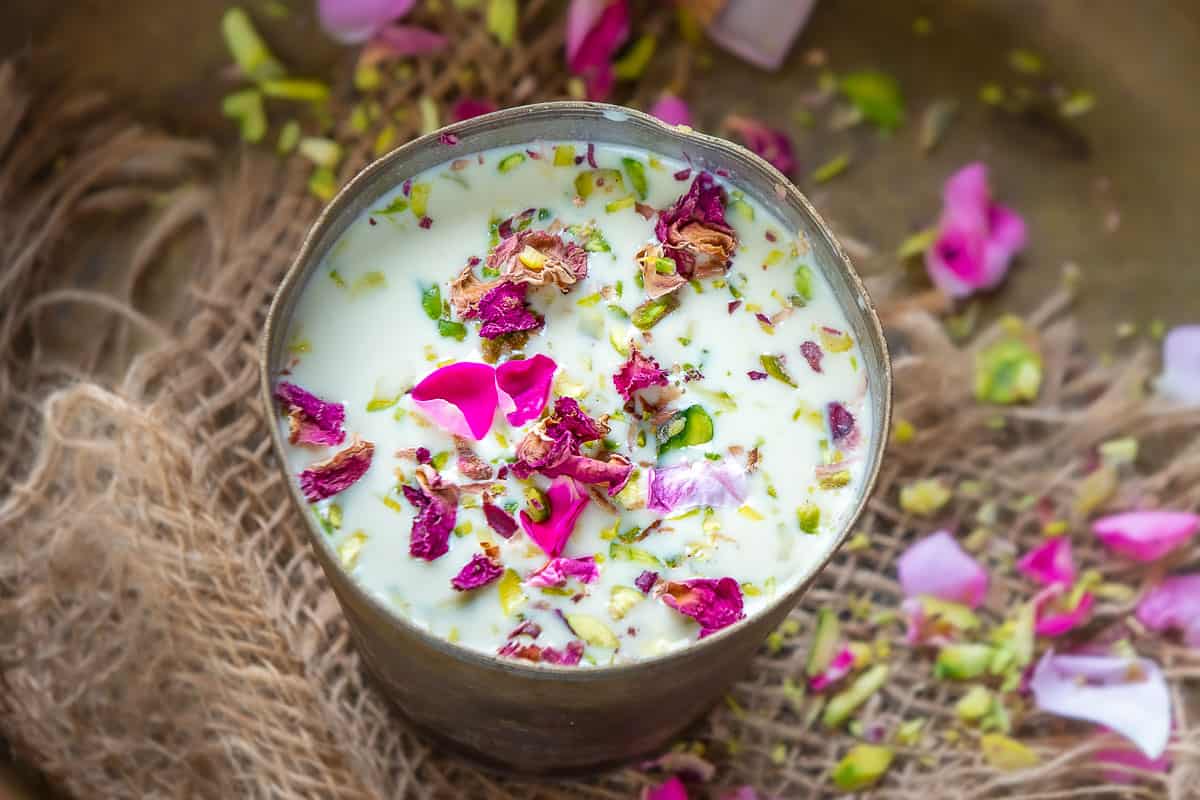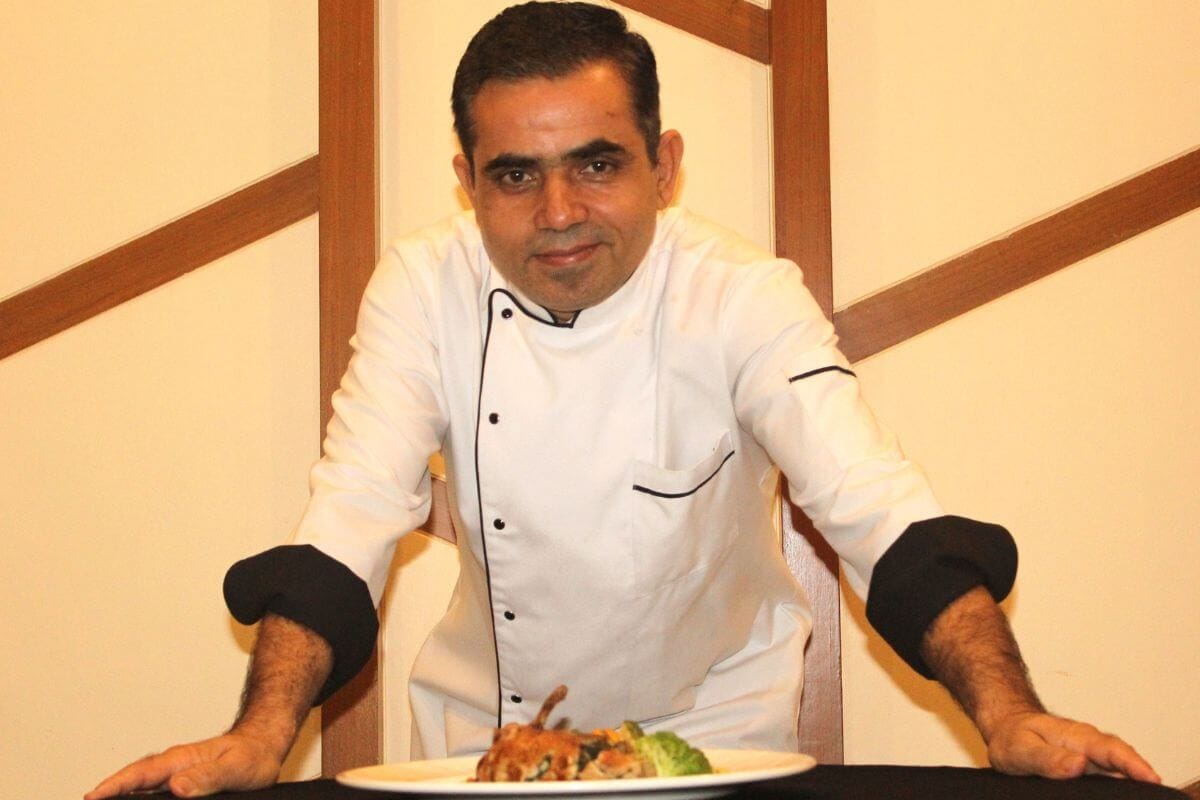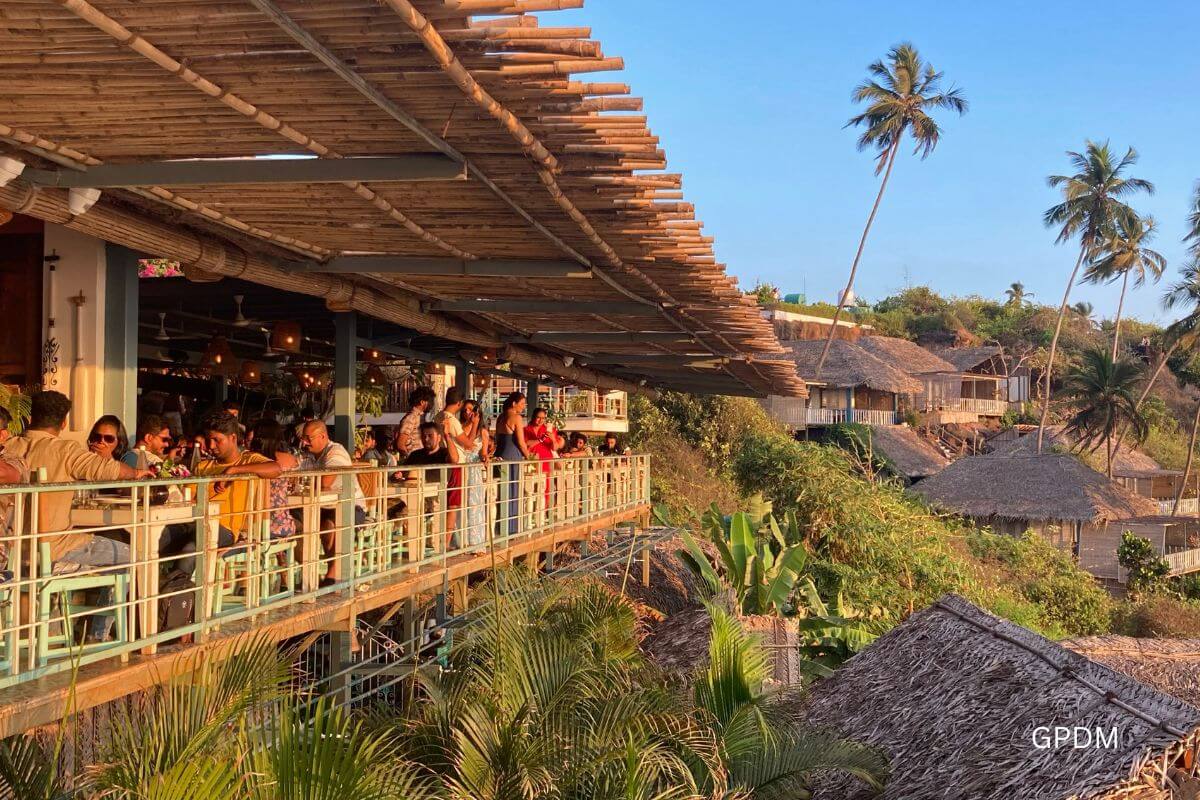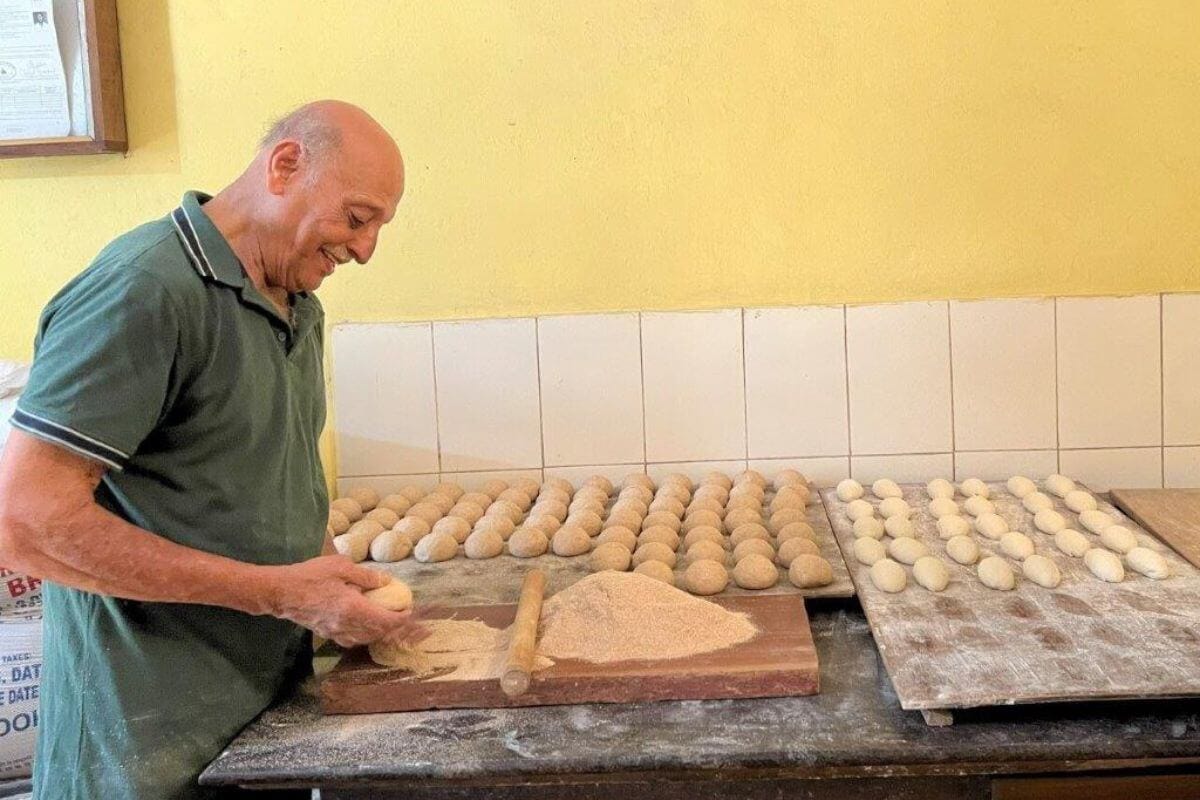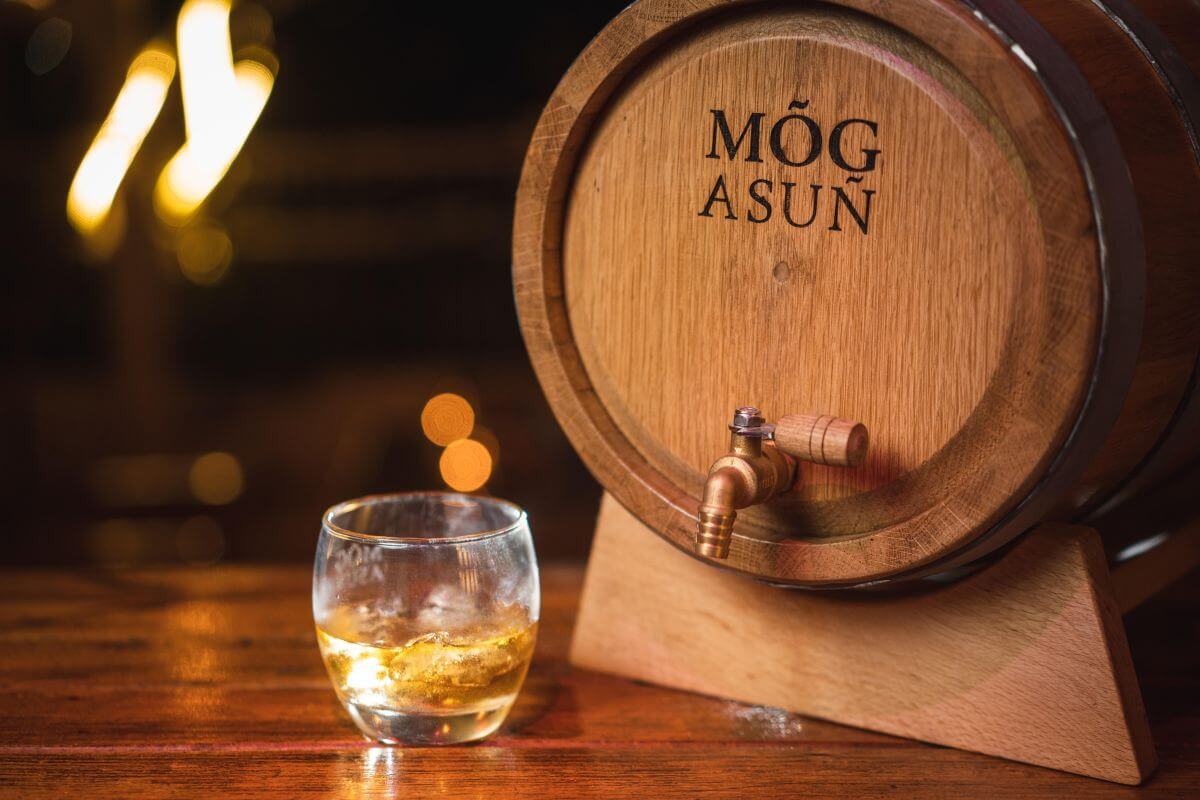Whether it’s Goa or the entire India, festivals always energise us with their charming tunes, and Holi is one of them. The most celebrated festival is fast approaching our gates. This beautiful day is colourfully enjoyed by every Indian and every punch of a water balloon brings back the memories of Fun and Food.
We have rounded up some incredibly sweet recipes that you can make to fulfil every hungry demand this Holi.
1. Thandai
Thandai is a traditional Indian drink made from milk, sugar and a unique blend of spices called Thandai Masala.
Ingredients
· for the Thandai Masala Paste:
· ¼ cup blanched almonds / Badam
· 2 tbsp. Pistachios
· ¼ cup Cashews
· ¼ cup Melon Seeds
· ½ tsp. Pepper
· 2 tbsp. Poppy
· 2 tbsp.
· dried rose petals 1½ cup water for soaking.
Method

Thandai masala paste:
First, in a large bowl, take ¼ cup almonds, 2 tablespoons pistachios, ¼ cup cashews, ¼ cup melon seeds, and ½ teaspoon pepper. Also add 2 tbsp poppy seeds, 2 tbsp fennel, 8 cardamom pods, ¼ tsp saffron and 3, tbsp rose petals. Add 1.5 glasses of water and soak for 6 hours. If you are in a hurry, soak in hot water for 1 hour. After 6 hours of soaking, we see that the dried fruit is well soaked. Add the now-soaked walnuts and water to the mixer. Mix to a very smooth paste. Thandai Masala Paste is ready. For the classic Thandai mix, mix 3 tablespoons of prepared Thandai masala paste and 2 tablespoons of sugar in a blender. Add 1 cup of cold milk and mix well. Pour Thandai into a tall glass with ice cubes and garnish with dried fruits and dried rose petals.
2. Gujiya

Gujiya is a traditional Indian sweet made during the festival of colours – Holi. It is a fried dough stuffed with khoya (mawa), dried fruit, coconut and sugar. It is also known as Ghughra in Gujarat, Karanji in Maharashtra, and Gujja and Thandai are the two staple foods in preparation for Holi.
Ingredients
· For the top layer:
· 1 cup all-purpose flour
· 1 tablespoon ghee
· A pinch of salt
· ¼ cup + 1 tablespoon water
· For the filling:
· ½ cup khoya (mawa)
· 4 cashews, chopped
· 4 almonds, chopped
· 12-15 raisins
· 1 tablespoon coconut flakes
· ¼ teaspoon ground green cardamom seeds
· pinch freshly grated nutmeg
· 3 tablespoons powdered sugar
Method
To make the filling: Heat the marshmallow in a skillet over medium-high heat. With constant stirring, it begins to melt. Bake until golden brown, turn off heat. Took me about 3-4 minutes. Pour into a bowl and allow to cool (warm). Then add sugar, cardamom powder, nutmeg, cashews, almonds and raisins. Mix well. It is best to break up lumps with your fingertips and mix well.
Kneading the Dough: You can perform this step while the khoya is cooling in the previous step to reduce preparation time. Take the all-purpose flour, salt, and ghee in a bowl. Rub the mixture with your fingertips. It has a consistency similar to breadcrumbs. Begin adding water little by little. Knead into a firm, smooth dough. Cover and leave to rest for 15 minutes. After the resting time, knead the dough again until smooth and divide into 10 equal parts. Shape into a smooth ball and flatten between hands.
Shaping Gujiya: works, each with a flattened disc. Using a rolling pin and pastry board, roll out a 4-inch diameter circle. Put about a spoonful of filling in the middle. Apply some water to the edges with your finger or use a pastry brush. Fold it in a semicircle. Seal the edges by pressing. If you have Gujiya mould, use it. Now score along the edge with a fork. It will do two things, one will make a nice design and the other will make sure it is well-sealed. If the ends are not sealed properly, they will crack open while frying and make a big mess. Repeat the same for the rest, keeping them covered with a clean tea towel to keep them from drying out.
Frying Gujiya: When you are done shaping, heat the oil or ghee in a pan over medium heat. I used oil. When hot enough, fry them a few at a time, turning or moving them so they brown evenly. When golden and crispy on all sides, remove with a slotted spoon. Place on a plate lined with absorbent paper and allow to cool completely before serving or placing in a container.
3. Coconut pumpkin Halwa

Coconut Pumpkin Halwa, also known as Kaddu ka Halwa, is an Indian pumpkin dessert made with pumpkin, sugar, ghee, coconut and nuts. It can be made in a pressure cooker on the stovetop or in an Instant Pot, and this delicious dessert takes less than 30 minutes to make!
Ingredients
· 2 tablespoons ghee 30ml
· 4 cups pumpkin, diced about 38mm
· 1/2 cup almond milk
· 5/8 cup brown sugar (½ cup + 2 tablespoons), adjust to taste
· 1/2 cup grated coconut plus more for serving
· 1/2 tsp. Cardamom Powder (Elaichi)
· 1 tbsp. Cashew nuts, cracked, plus more for serving (optional)
· 1 tbsp. Raisins
· 2 tsp ghee to finish, 10ml
Method.
Start the pressure cooker in fry mode When it starts to boil, add 2 tbsp (30ml) ghee to the pan, then add the diced pumpkin. Fry for 2-3 minutes until the smell of raw pumpkin disappears. Add the almond milk and cover the saucepan with a lid.
Press the pressure cooker or manual button with the pressure valve in the sealed position. Cook at high pressure for 5 minutes. Perform a quick depressurization. (With the pressure cooker on the stove, cook for 2 whistles) Open the pressure cooker and set the cooking mode. Mash the squash with a fork or potato masher.
Then add the sugar and cook, stirring constantly, for 2 to 3 minutes. Add the shredded coconut powder and cardamom powder and cook the halvah for another 2-3 minutes, stirring constantly, until the mixture starts to thicken. Add cashews, almonds and raisins and cook for another 2 minutes. Add the remaining 2 teaspoons (10mL) of ghee and stir. Garnish with more nuts and coconut powder as desired and serve hot.
Want to Make It Vegan: Replace ghee with coconut oil.
4. Kalakand

Kalakand recipe with step-by-step pictures using fresh homemade paneer. Learn how to make this moist, juicy and absolutely delicious Indian kalakand sweet at home with this recipe. This recipe uses only 3 main ingredients and some optional flavouring and decoration
Ingredients:
· Whole Ricotta
· Condensed Milk
· Ground Cardamom
· Saffron (optional)
· Pistachios (optional)
Method.
Line a small skillet or 7" x 7" a baking dish with parchment paper. Put aside. Add the condensed milk and ricotta to the non-stick pan. Mix well with a silicone spatula and break up any clumps.
Cook over medium-high heat, stirring frequently. Wipe down the sides and stir every few minutes. The mixture is very runny for the first 5 minutes but continues to thicken.
After about 20 minutes, the mass begins to separate from the walls and stick together into a thick paste. Add the cardamom powder and mix well. Place the dough on a baking tray lined with baking paper. Using a silicone spatula, press down evenly to form a 6" x 6" square alignment of the top and sides. Garnish with the chopped walnuts and press down lightly. Let cool completely, about an hour.
After about an hour, use a silicone spatula to cut the Kalakand barfi into small 1-inch cubes (about 36 square pieces). Traditionally, kalakand pieces are much larger, but if you prefer the traditional size, cut them into 9 square pieces. Garnish with chopped pistachios and serve.
5. Rava Coconut Ladoo

Rava Laddu is a sweet and delicious dessert ball made from freshly grated coconut and toasted semolina, enriched with aromatic cardamom and saffron. Rava Laddu or Narali Pakatale Ladoo – literally means balls of coconut syrup in Marathi. They are made from fine semolina (sooji or rava) and fresh coconut and are sprinkled with nuts and raisins.
Ingredients
· 2 cups rava/sooji fine grits
· 2 tablespoon gram flour (began)
· ½ cup ghee
· 1 cup fresh or frozen coconut
· 2 teaspoons ground cardamom
· 2 tablespoons raisins
· 1 pinch saffron
· 2 tablespoons chopped almonds and pistachios
· Simple syrup:
· 1½ cup sugar
· ¾ cup water
Method-
Roast rava and besan till it turns aromatic with the ghee over medium heat for 10 minutes, stirring constantly. Add the coconut flakes and sauté for another 2 minutes. Turn off the heater. Place the sugar and water in a saucepan and bring to a boil over medium-high heat. Then reduce the heat to low and cook for 5-7 minutes. Lift the spoon and watch the last few drops of syrup drip off the spoon. The last few drops should form a single line chain. Make sure you don’t overcook or overcook the syrup. See the notes below for more tips.
Add the sugar syrup to the roasted ingredients. Add saffron, cardamom powder, walnuts, and raisins and mix well. Allow the mixture to cool completely. Form round balls with about 3-4 tablespoons of the mixture. Squeeze them between your hands and then roll them into round balls.
6. Moong dal halwa

Recipes with halwa or lentil-based sweets or desserts are very popular in India and are prepared for different purposes. but there are also lentil-based sweets and desserts that are seasonal and only made that season. One such seasonal sweet lentil or sweet dal is moong dal halwa, which is known for its sweet, smooth and crumbly flavour.
Ingredients
· 1 cup moong dal
· soaking water
· ½ cup ghee/ghee
· 1 tablespoon rava/semolina/sooji
· 2 cups milk
· 1 cup sugar
· 5 chopped cashews
· 5 chopped almonds
Method.
moong dal and soak for 2 hours, strain the water and put in a blender, knead into a slightly coarse dough, and add water if necessary. Stay away. Heat in a large kadai, heat ½ cup of ghee and add 1 tablespoon of rava.
Simmer until the rava is fragrant. The addition of rava gives the halwa a good texture. Add the prepared moong dal paste and stir well. keeping the flame on medium-high, stir until the moong dal has absorbed the ghee. continues to boil, breaking up the lumps. Cook until the mixture acquires a crumbly, grainy texture. After 20 minutes the mixture will be crispy.
Now add 2 cups of milk and some saffron. Alternatively, you can use water or a mixture of milk and water. Continue beating until the mixture has absorbed all the milk. The mixture begins to hold its shape as it exits the kadai. Now add 1 cup sugar and mix well. The sugar begins to melt and the mixture becomes liquid. Continue to simmer and dissolve any lumps.
Cook until the mixture begins to separate from the ghee and turns golden. Take about 60 minutes. Now add 5 cashews, 5 almonds and 1/2 teaspoon of cardamom powder. Mix well. Finally, enjoy moong dal halwa with more nuts.
7. Dahi Vada

Dahi Vada curd Dumplings are just supreme Holi chats. Dahi Vada, Dahi Bhalla or Dahi Bara are fried lentil dumplings, topped with sweet curd, various chutneys, tutti-fruity and spices. This is a famous Indian chaat recipe and a portion of very popular street food.
Ingredients.
Dahi VADA
· 1 cup urad dal
· 1 teaspoon minced ginger
· 1 teaspoon minced green chilli pepper
· 1 pinch baking powder
· cooking oil
For Soaking water
· 1-litre water
· 1 teaspoon salt
Curd
· cups of whipped fresh curd
· 1 teaspoon of sugar
· 1/2 teaspoon salt
Toppings
· 1/4 cup coriander mint chutney
· 1/4 cup tamarind chutney
· 1 teaspoon dahi vada masala
· ½ teaspoon red chilli powder
· ½ teaspoon toasted cumin powder
· salt to taste
· 2 tablespoons chopped fresh coriander
VADA making
Dal washed and soaked in 3-4 cups of water for 4-5 hours. Drain the water and add the dal to the blender along with the ginger, green chillies and salt. Blend the dal into a thick paste. Just add 2-3 teaspoons of water while grinding the dal. Beat the dal with your hands for 4-5 minutes until completely light. Cover the bowl and let it rest for 15 minutes. Add the baking soda and beat for another minute. Take a bowl of water and add a small drop of noodles. If the dough floats immediately, the dough is ready. If not, type some more. Heat oil for frying in a pan. Wet your hands with water and take a small amount of the paste between your hands. Shape it into a flat round vada. Throw it in the hot oil. Heat over medium heat and fry all the vadas until golden brown. Drain on a plate. For Vada Soaking water. Mix all the ingredients in a bowl and set aside.The sweet curd making
Beat the curds with the sugar and salt and set aside Putting all together Add the fried vada to the soaking water and leave for 15 minutes. Gently squeeze the Vada in your hand and place it on a serving plate. Garnish with whipped quark. Garnish with coriander mint chutney and tamarind chutney. Sprinkle it with Dahi Vada Masala, Red Chili Powder, Roasted Cumin Powder, Salt and Fresh Coriander. Chill in the refrigerator for several hours. Serve cold.
7. Malpua

Malpua is a festive delight; is traditionally made in many Indian homes during festivals like Holi. In India, you are most likely to find a zillion versions of this celebration treat right from the households to the halwai shops (sweet shops), one different from the other depending on the region.
Ingredients (1 CUP = 240ML)
For Malpua
· 1/4 cup all-purpose flour or wheat flour
• ½ teaspoon Elaichi (green cardamoms powdered)
• 1 teaspoon saunf (fennel seeds)
• 1½ cup milk (use more as needed)
• 3 to 4 tablespoons Ghee for frying
• 3 tablespoons milk powder (optional) or replace with mawa or khoya
For sugar syrup
• ½ cup sugar organic
• 1/4 cup water or as needed
• 2 teaspoon lemon juice optional
Method
Pour milk into a mixing bowl. If using mawa or milk powder, add it and mix well. Add flour, fennel seeds and Elaichi powder. Make a batter mixing everything well. Use more milk as needed to make a batter that is not too thick or too runny. But should be of flowing consistency. By adjusting the consistency of batter, you can make thick or thin Malpua as per your liking. If the batter is too thin, the batter spreads a lot and makes thin ones. Very thick the batter makes thick & dense Malpua. If you prefer fluffy Malpua, beat the batter for a few minutes with a fork or whisk. Keep the batter aside until the sugar syrup is ready. If you have time, you can set this aside for 4 hours.
Make Sugar Syrup
Add sugar and water to a pot. Dissolve the sugar on a medium flame. Boil the sugar syrup until it turns sticky or reaches a 1 string consistency. To prevent crystallisation in sugar syrup: Add 2 tsps. lemon juice to the syrup or In another large pot, bring 3 cups of water to a boil. Turn off the stove. Place the sugar syrup pot in the hot water.
Frying Malpua
Heat ghee for frying Malpua. When the ghee is hot, pour 2 to 3 tbsps. of batter. The batter spreads depending on the consistency. You can add more milk at this stage to thin down the batter to make thin Malpua. Allow them to fry until golden. Flip and fry on the other side as well. Remove them from the pan and add them directly to the syrup. Give a quick stir to the sugar syrup before adding the Malpua. If the sugar crystallizes then add 2 tbs water and heat it. You can allow them to soak in the syrup for 10 mins if you have made thick Malpua or remove them to a plate just after dipping them. Garnish Malpua with chopped pasta. You can also top these with rabdi and then garnish with pasta.
8. Phirni

Phirni, also called Firni, is a classic slow-cooked Indian sweet pudding made with basmati rice, milk, nuts, and sugar and flavoured with cardamom or saffron powder or rose water. Phirni is believed to have originated in ancient Persia or the Middle East and it was the Mughals who invented and brought it to India. The Mughal Empire took a liking to the milk-based royal dish and popularized it.
Ingredients
• 2 tablespoons basmati rice
• water for soaking
• 1-liter full cream
• ¼ cup sugar
• ¼ teaspoon ground cardamom/Elaichi powder
• 2 tablespoons saffron milk
• some nuts, chopped
Method
First, soak 2 tablespoons basmati rice for 30 minutes, add the water and blend the rice until you get a coarse paste. Stay away. now boil 1 liter of milk in a large Kadai. Stir occasionally and simmer for 10 minutes.
Keep the heat low or until the milk thickens. Add the now-prepared coarse rice noodles, and stir continuously for 5 minutes. otherwise, lumps may form. Let simmer for another 5 minutes, stirring occasionally. Boil the milk until the rice is fully cooked. Then add ¼ cup of sugar and 2 tablespoons of saffron milk. Mix well until the milk thickens and becomes creamy. Add cardamom powder and mix well. Finish with glazed Phirni garnished with some chopped walnuts.
9. Rossy Pink Rasgulla

If you find traditional Rasgulla boring, try this pink Rasgulla. You must try this Holi, the colours will make this Christmas season more exciting, after all, Holi is colourful.
Ingredients
• 1.5-litre Full Fat Milk
• 2 Cup Sugar
• 2 tbsp White Vinegar
• 1 tbsp Rose Water
• 6 drops Rose/Pink colour
Method
Making paneer/chenna
First of all, take a heavy bottom pan and pour 1.5 litres of milk into it. Put the pan on medium heat and let it boil, stirring in between. After the first boil comes, switch off the heat and keep the milk for 10 minutes to cool down.
Now add vinegar to the milk, whilst stirring the milk. Once the milk curdles completely (it will take 1-2 minutes), add 8-10 cubes of ice to it. This will help in cooling down the temperature of the milk and curdled milk will combine together to form big chunks. Strain this on a strainer lined with Muslin cloth. You can keep the strained water(whey) to add in your curries or knead flour as it is a very good source of protein.
Now wash this curdled milk with the running water under the tap for 8-10 minutes. This helps in removing the sour taste due to vinegar. Gather the muslin cloth from all the corners and squeeze the extra water gently. Don squeeze hard otherwise the curdled milk will also come out with water.
Hang this for 30 minutes so that the extra water present will also drop down. Now take out the curdled milk onto a plate. Your paneer (chenna) is ready. This would be a little granular and dry in appearance.
Recipe for making and cooking chenna balls Add 2-3 drops of food colour to the paneer and knead it with the help of your palm for 10-12 minutes and make a soft and smooth dough of it. Now take one tablespoon of mixture and knead again and make a round ball of it. Repeat the above process and make the balls of all the mixture. In the end, you will have around 17 – 20 balls.
Put 2 cups of sugar with 5 cups of water in a pressure cooker on gas for a boil. Add remaining food colour and mix. Once it begins to boil, add these balls to it and put the lid on. After the pressure cooker whistles once, simmer the flame and keep it on sim for around 10-15 minutes.
Now open the cooker after its pressure is released, and the balls would have doubled in size. Take out all the balls one by one and give them a little squeeze to release the extra sugar syrup and keep them in cold water for half an hour. This stops the balls from overcooking.
Cook the leftover sugar syrup for 10 more minutes and cool it down. Once the syrup is cooled, add Rose water and gently put the balls again in it taking out balls from the water. Keep Rasgulla in the fridge and serve them chilled.
10. Paneer Bhatura – Let’s do Holi 2023 Special

We thought you were all a little tired of sweets by now, so how about some crunchy chatpata? Add some paneer to the popular bhatura and take the flavour to the wonders with this speciality paneer bhatura. Serve with deliciousness. Traditional bhatura (Indian flaky bread) fills Holi even further to the next level. The perfect recipe for this Holi in 2023.
Ingredients
• 2 Cup All Purpose Flour/ Maida
• 2 Tablespoon Semolina/Sooji
• 3 Tablespoon Yogurt
• 1/2 Teaspoon Baking Soda
• 1 Teaspoon Baking Powder
• 1 Teaspoon Sugar
• 1/2 Teaspoon Salt
• 2 Tablespoon Oil
• Oil for Deep Frying
For Stuffing
• 125 grams Paneer/Cottage cheese
• 1/2 teaspoon Salt
• 1 Green chilli finely chopped
• 1 tbsp Green coriander finely chopped
Method
In a mixing bowl, add all-purpose flour, semolina, yoghurt, baking soda, baking powder, sugar and salt and mix well. Now knead it to a soft dough with the help of lukewarm water. Apply 2 tablespoon of oil all over the dough and cover it with a wet kitchen towel. Keep aside in a warm and dry place for resting for at least 4 hours.
In another mixing bowl, grate/crumble the paneer, add salt, green chilli and green coriander to the grated paneer and mix well. Our paneer stuffing is ready. Divide the dough into equal parts and make round balls of it. Take one ball of dough, and expand it by pressing with your hand. Make a little depth with your fingers and place
1 or 1.5 tablespoons of stuffing in it. Gather it from all ends and seal them together to make a smooth round shape again. Press the ball gently with your hands and expand a little. Now with the help of a rolling pin, roll it into a circle of 4-5-inch diameter.
Fry them in hot oil till both sides are nicely golden and take them out on a kitchen towel. Serve hot and enjoy with Punjabi chole, pickled onion and green chillies.
Final words-
Well! Here we are done making your List Of Incredible Sweets for Holi, now the ball is in your court make whatever you want with these recipes and fill all the demands of your loved coloured faces this special time.
HAPPY HOLI!

